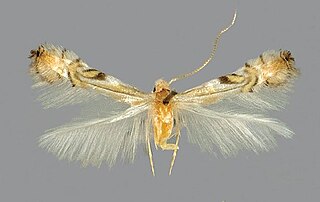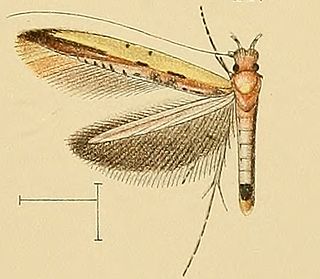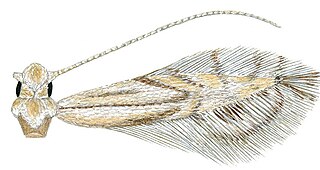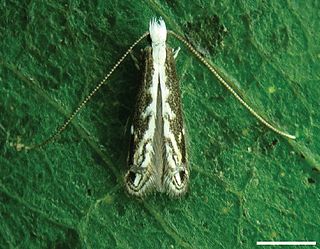| Phyllocnistis subpersea | |
|---|---|
 | |
| Scientific classification | |
| Kingdom: | |
| Phylum: | |
| Class: | |
| Order: | |
| Infraorder: | |
| Family: | |
| Genus: | |
| Species: | P. subpersea |
| Binomial name | |
| Phyllocnistis subpersea Davis and Wagner, 2011 [1] | |
Phyllocnistis subpersea is a moth of the family Gracillariidae. It is found in the Dade and Monroe Counties of Florida. Mines of what appear to be this species have been found as far north as the Green Swamp in coastal South Carolina.

Moths comprise a group of insects related to butterflies, belonging to the order Lepidoptera. Most lepidopterans are moths, and there are thought to be approximately 160,000 species of moth, many of which have yet to be described. Most species of moth are nocturnal, but there are also crepuscular and diurnal species.

Gracillariidae is an important family of insects in the order Lepidoptera and the principal family of leaf miners that includes several economic, horticultural or recently invasive pest species such as the horse-chestnut leaf miner, Cameraria ohridella.

Florida is the southernmost contiguous state in the United States. The state is bordered to the west by the Gulf of Mexico, to the northwest by Alabama, to the north by Georgia, to the east by the Atlantic Ocean, and to the south by the Straits of Florida. Florida is the 22nd-most extensive, the 3rd-most populous, and the 8th-most densely populated of the U.S. states. Jacksonville is the most populous municipality in the state and the largest city by area in the contiguous United States. The Miami metropolitan area is Florida's most populous urban area. Tallahassee is the state's capital.


The length of the forewings is 2-2.7 mm. Adults have been recorded from February to April in Florida.
The larvae feed on Persea borbonia . They mine the leaves of their host plant. The mine has the form of a long, slender, serpentine gallery, containing a dark, median frass trail, on the underside or occasionally the upperside of the leaf, with pupation occurring in a slightly enlarged, elliptical chamber at the mine terminus along a leaf edge. The egg is deposited away from the midrib, usually on the lower side of the leaf. Mine width increases from about 0.3 mm broad to a maximum width of about 2–2.5 mm. The width of the frass trail is usually about half the mine width. Early instars of the larvae have a highly modified, depressed body for sapfeeding. The final instar is non-feeding, with all mouthparts reduced or absent except for functional spinneret.
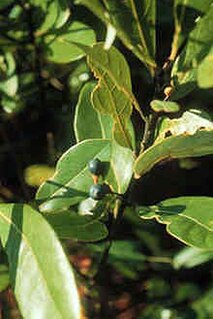
Persea borbonia is a species of plant in the Lauraceae family, with several common names including redbay, tisswood, scrubbay, shorebay, and swampbay.

A leaf miner is the larva of an insect that lives in and eats the leaf tissue of plants. The vast majority of leaf-mining insects are moths (Lepidoptera), sawflies and flies (Diptera), though some beetles also exhibit this behavior.
Frass refers loosely to the more or less solid excreta of insects, and to certain other related matter.
